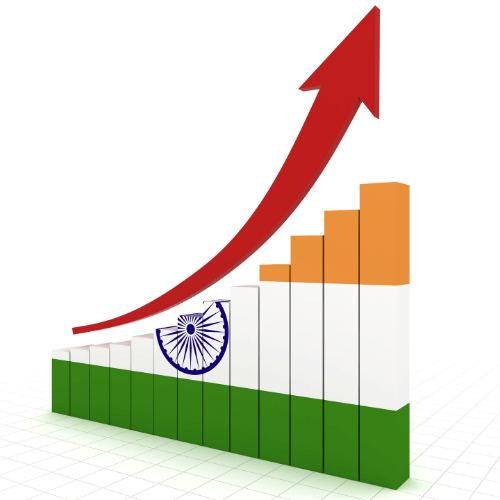China’s economic expansion during the second quarter of the year has displayed indications of fragility as both internal and external demand experience a downturn. The post-pandemic momentum has deteriorated swiftly, intensifying the pressure on policymakers to implement supplementary stimulus measures to bolster economic activity.
Nevertheless, the authorities encounter a formidable task of upholding the recovery while averting excessive debt hazards and structural imbalances. The most recent data suggests that China’s post-pandemic upswing has reached its conclusion, with dismal and faltering indicators accompanied by unprecedented levels of youth unemployment. There are apprehensions that the nation may fall short of its modest growth objective for 2023.
GDP Growth and Retail Sales:
China’s gross domestic product (GDP) experienced a meager 0.8% expansion in the second quarter, falling short of analysts’ expectations. Comparatively, on a year-on-year basis, GDP grew by 6.3% in Q2, surpassing the growth rate of the first quarter but remaining lower than the projected 7.3% growth. However, it is crucial to note that the figures are heavily influenced by the economic challenges posed by stringent COVID-19 lockdowns in major cities during the corresponding period last year. The country observed a 3.1% growth in retail sales during June, marking a significant deceleration from the 12.7% increase recorded in the previous month, indicating subdued consumer demand.
Industrial Output and Private Investment:
Surprisingly, industrial output accelerated to 4.4% in June, outpacing May’s 3.5%, yet demand remains lackluster. On the other hand, private fixed-asset investment contracted by 0.2% in the first half of the year, in stark contrast to the 8.1% growth observed in state entity investments, highlighting weak confidence in the private business sector.
Challenges in Exports and Property Market:
Recent data reveals a rapid decline in the post-COVID recovery, with exports witnessing the sharpest downturn in three years due to cooling demand both domestically and internationally. Additionally, the downturn in China’s vital property market has further dampened confidence. These factors, combined with the overall feeble momentum and the risk of a global recession, have intensified expectations for policymakers to undertake more substantial measures to support the world’s second-largest economy.
Policy Measures and Outlook:
Chinese authorities are anticipated to implement additional stimulus measures, including fiscal spending to finance major infrastructure projects, increased support for consumers and private enterprises, and some relaxation of property policies. Nevertheless, analysts caution that a swift turnaround is improbable. Attention is now focused on an upcoming Politburo meeting later this month, during which top leaders may chart the policy course for the remainder of the year.
Concerns and Implications:
The lackluster economic data has prompted a downturn in Asia’s stock markets and a devaluation of the Chinese currency. While China may still achieve its modest growth target for 2023, there are risks of falling short of the annual objective for the second consecutive year. The deceleration in economic expansion raises concerns regarding the mounting unemployment and the potential for deflation, which could further erode confidence in the private sector. The youth unemployment rate reached an unprecedented high in June, underscoring the challenges faced by recent graduates in attaining employment opportunities.
Conclusion:
China’s economic revival has displayed signs of fragility, with both domestic and international demand weakening. Policymakers are facing pressure to deliver additional stimulus while skillfully navigating the risks associated with mounting debt and structural imbalances. The upcoming policy decisions will be crucial in determining the country’s economic trajectory for the remainder of the year. As China grapples with issues in the real estate market, declining exports, and the imperative of fostering job creation, policymakers are confronted with the delicate task of striking a balance between supporting economic growth and managing potential risks.















